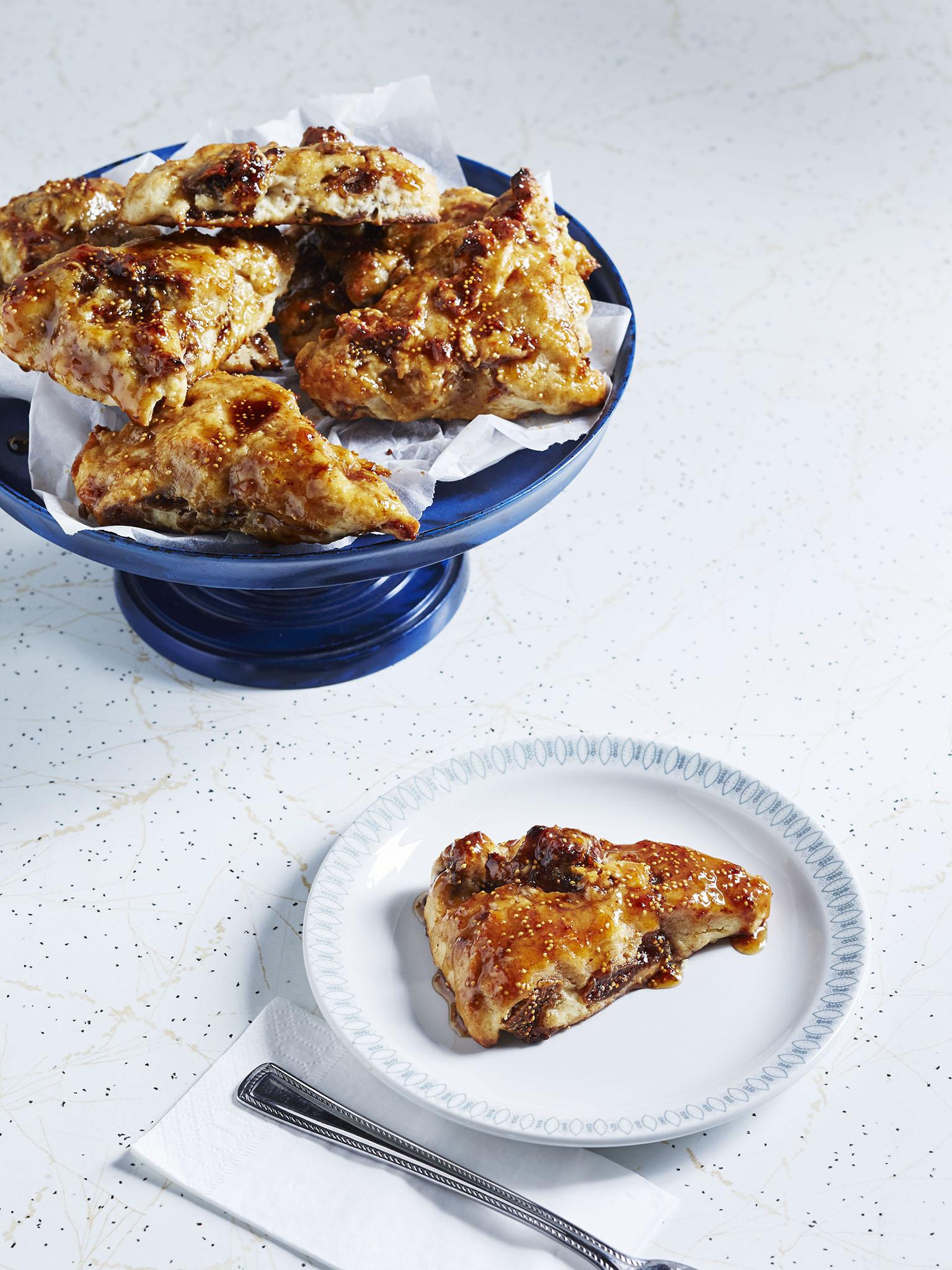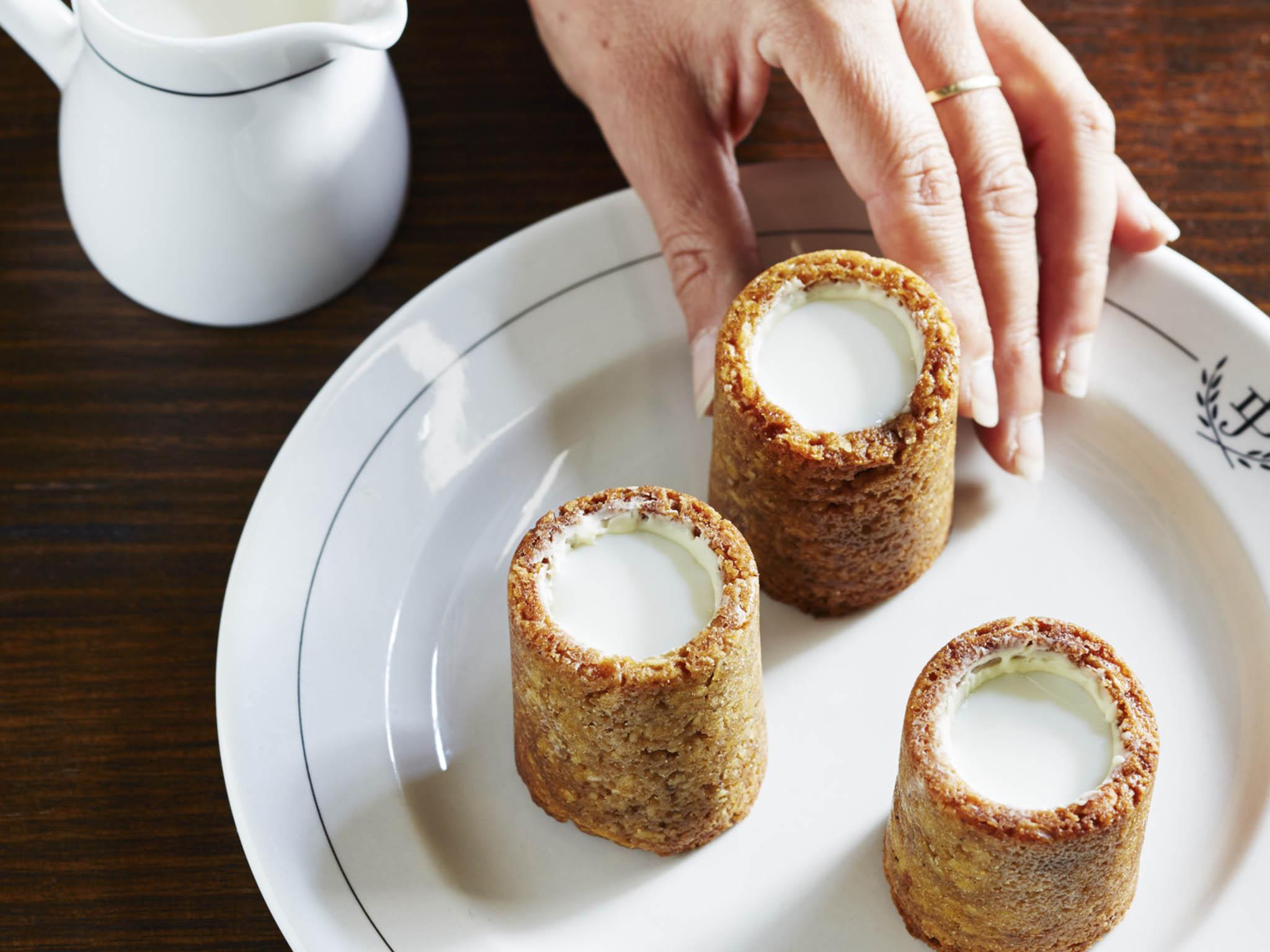The Desserts of New York recipes: From oatmeal cookie shots to red velvet vacherin
Like all good desserts, Yasmin Newman's reflect NYC's at its best with cakes, pastries and sweet treats. Here we share three from her book, The Desserts of New York

Your support helps us to tell the story
From reproductive rights to climate change to Big Tech, The Independent is on the ground when the story is developing. Whether it's investigating the financials of Elon Musk's pro-Trump PAC or producing our latest documentary, 'The A Word', which shines a light on the American women fighting for reproductive rights, we know how important it is to parse out the facts from the messaging.
At such a critical moment in US history, we need reporters on the ground. Your donation allows us to keep sending journalists to speak to both sides of the story.
The Independent is trusted by Americans across the entire political spectrum. And unlike many other quality news outlets, we choose not to lock Americans out of our reporting and analysis with paywalls. We believe quality journalism should be available to everyone, paid for by those who can afford it.
Your support makes all the difference.After setting herself the colossal challenge of eating the best desserts in New York City in just three months, food writer Yasmin Newman, covered 373 desserts across 169 venues. That's 4.1 puddings a day. From the city's coolest neighbourhood treats to the classic New York Cheesecake and all the almagamations that come inbetween such as cult the cronut, Newman shows how to bake – and eat – like a real New Yorker.
Red velvert vacherin
Rainbow desserts may be all the rage, but red velvet is the OG of bright-coloured sweets. It’s a fact not lost in New York, where there’s a certain reverence for the American bakeshop classic. For me, Magnolia Bakery’s towering layer cake, Ample Hills’ cream cheese ice cream with red velvet sponge, and Sweet Revenge cupcakes with berry coulis are its best traditional and new-school iterations. This red velvet vacherin – striking red and white layers of meringue, cheesecake ice cream and raspberry sorbet – is my elegant homage to the original. It’s, dare I say it, even better, and further proof that red velvet still rules.
Serves 6-8
2 egg whites
pinch of fine salt
75g caster sugar
75g pure icing (confectioners’) sugar
1 tablespoon cornflour (cornstarch)
¾ teaspoon unsweetened (Dutch) cocoa powder
1 teaspoon red food colouring
fresh raspberries, to serve (optional)
Cheecake ice cream
200g cream cheese, chopped, softened
180ml pouring (whipping/heavy) cream
180ml milk
165g caster (superfine) sugar
pinch of fine salt
Raspberry sorbet
110g caster sugar
1 tablespoon glucose syrup
60ml water
300g fresh or frozen raspberries
juice of ½ lemon
To make the cheesecake ice cream, process all the ingredients in a food processor until smooth. Churn in an ice-cream maker according to the manufacturer’s instructions, then transfer to an airtight container and freeze for 4 hours or until frozen. To make the raspberry sorbet, place the sugar, glucose and water in a small saucepan over medium–high heat. Bring to the boil, stirring until the sugar dissolves, then leave to cool completely. Process the raspberries, lemon juice and syrup in a food processor to a smooth purée, then pass through a fine sieve, discarding the seeds.
Churn in an ice‑cream maker according to the manufacturer’s instructions, then transfer to an airtight container and freeze for 3 hours or until frozen. Preheat the oven to 120°C (235°F). Using an electric mixer, whisk the egg whites and salt until soft peaks form. Whisking constantly, gradually add the caster sugar and whisk to stiff peaks. Sift over the icing sugar and cornflour, then fold to combine. Divide the mixture in half. Sift the cocoa over one portion and fold to combine, then fold in the food colouring.
Using a pencil, draw two 20 cm (8 in) × 10 cm (4 in) rectangles each on two sheets of baking paper (four rectangles in total), then place, pencil side down, on two baking trays. Using the templates as a guide, spread the white meringue over two rectangles, smoothing the tops. Spread the red meringue over the other two rectangles. Bake, swapping the trays halfway through, for 1 hour or until crisp but not coloured. Cool completely on the trays. The meringue will keep in an airtight container for 1 week.
To assemble, remove the ice cream and sorbet from the freezer to soften slightly. Meanwhile, line a 20 cm (8 in) × 10 cm (4 in) loaf tin with plastic wrap, allowing plenty of overhang, and place a layer of white meringue in the base (carefully trim the edges if necessary). Spread over half the ice cream and smooth the surface, then top with a layer of red meringue. Spread over the sorbet and top with the remaining piece of red meringue. Spread over the remaining ice cream, then finish, uneven edge up, with the remaining layer of white meringue (the vacherin will come up over the rim).
Fold over the plastic wrap and freeze overnight so the meringue softens slightly. To serve, carefully unmould the vacherin. Using a warm sharp knife, cut into 3 cm (1¼ in) thick slices and serve immediately with fresh raspberries, if desired.

Fig and marsala glazed scones
I’m a die-hard fan of traditional British scones served with sweet jam and whipped cream, but I’ve also come to love America’s take: generous, wedge-shaped and chunky with mix-ins. They’re also typical breakfast fare – not just afternoon tea – which is a major plus.
With unique flavour combinations that mirror the seasons, New York scones are particularly captivating. In summer, you’ll find blackberry and mint at Ovenly, while in winter Bibble & Sip turns out a mean spiced pear with bergamot glaze. Then there’s the constant favourite at Levain studded with oatmeal and raisins. These scones, made with dried figs plumped up in sweet Marsala, can be enjoyed year round, and the syrup doubles as a glaze, which makes them even more lush.
Makes 8
300g plain flour
2 tablespoons caster sugar
1 tablespoon baking powder
½ teaspoon fine salt
finely grated zest of 1 large lemon
330ml thickened (whipping) cream
1 tablespoon honey
Marsala figs
125ml marsala
110g caster sugar
125ml water
100g dried figs, stalks removed, quartered
To make the Marsala figs, place the Marsala, sugar and water in a small saucepan and bring to the boil over medium–high heat, stirring to dissolve the sugar. Add the figs and cook, stirring occasionally, for 8–10 minutes or until syrupy. Remove from the heat and set aside to cool.
Place the flour, sugar, baking powder, salt and lemon zest in a large bowl. Remove the figs from the syrup, reserving the syrup, then add the figs to the flour mixture and toss to combine. Pour in the cream and honey and stir until just combined. Shape into a rustic 20 cm (8 in) round (don’t flatten it, it’s supposed to have a bit of height), cover with plastic wrap and refrigerate for 30 minutes to firm slightly.
Preheat the oven to 200°C (400°F) and line a baking tray with baking paper.
Cut the dough into eight equal wedges, then place, 5 cm (2 in) apart, on the prepared tray (the dough may be a bit sticky and tricky to move, so don’t worry if the wedges become slightly misshapen). Bake for 15 minutes or until golden and risen.
Remove the scones from the oven and, while they are still warm, brush with the reserved glaze (you may have some glaze left over). Cool for 20 minutes, then serve warm (my pick) or at room temperature (just as good!).

Oatmeal cookie shots
Who doesn’t like a cookie? New Yorkers love them. They grab them from bakeries, for sit downs in cafes and have them delivered to their homes in the wee hours.
You can even find cookies in the finest restaurants in town, served just like when you were a kid: warm from the oven with a glass of milk. Only much better, of course: baked to order with ingredients like Valrhona chocolate and burnt butter, and served with Tahitian vanilla-infused milk. It was one of the biggest trends when I visited, with highlights at Untitled and Upland.
The deconstructed take with cookie shards and milk ice at The NoMad is one of my favourite riffs on the theme, but the most famous is Dominique Ansel’s legendary shot glass forged from a choc chip cookie and filled with warm milk.
This is my rendition, made with another American classic, the oatmeal cookie, and every bit as good.
Makes 16
260g plain (all‑purpose) flour
1 teaspoon ground cinnamon
1 teaspoon bicarbonate of soda (baking soda)
½ teaspoon fine salt
180g unsalted butter, chopped, softened
220g light brown sugar
75g caster (superfine) sugar
180g rolled (porridge) oats
2 eggs
1 teaspoon natural vanilla extract
150g white or dark chocolate, melted
warm milk, to serve
Sift the flour, cinnamon, bicarbonate of soda and salt into a bowl and set aside. Using an electric mixer, beat the butter and sugars for 1 minute or until light and creamy. Add the flour mixture and beat on low speed until just combined. Add the oats, eggs and vanilla, and beat until combined. Cover the bowl with plastic wrap and refrigerate for 1 hour or overnight.
Grease an eight-hole shot glass mould. Divide the dough in half and return one portion to the fridge. Roll out the remaining portion between two sheets of baking paper to a 3 cm (1¼ in) thick, 24 cm (9½ in) square (the size and thickness of the dough is very important for filling the moulds properly). Remove the top sheet of baking paper then, using a ruler and sharp knife, cut into eight 12 cm (4¾ in) × 6 cm (2½ in) rectangles. Transfer the dough on the baking paper to a tray and refrigerate for 30 minutes or until just firm. Preheat the oven to 180°C (350°F).
Place a cookie dough rectangle inside each shot glass mould, ensuring the dough covers the bottom, is evenly spread throughout the mould and does not come above the rim (you may need to use your fingers to massage it around and down; if the dough is too stiff, allow it to soften slightly at room temperature). Place the moulds on a baking tray and bake for 25 minutes or until golden and crisp.

Remove from the oven and if the cookie dough has puffed above the rim, gently press to flatten (this is the base of the shot glass, so if it’s uneven it will topple). Cool the cookies in the mould, then refrigerate for 1 hour or until firm. Carefully unmould the cookies. Repeat with the remaining dough (or refrigerate for up to 2 days, or freeze for another time).
Using your finger, generously coat the inside of each cookie shot glass with melted chocolate, ensuring there are no holes. Refrigerate for 20 minutes or until set, then repeat the process. Serve chilled or at room temperature filled with milk.
TIP: Silicone shot glass moulds are available from speciality kitchenware stores.
Extracted from The Desserts of New York by Yasmin Newman (Hardie Grant, £20) Photography © Alicia Taylor
Join our commenting forum
Join thought-provoking conversations, follow other Independent readers and see their replies
Comments